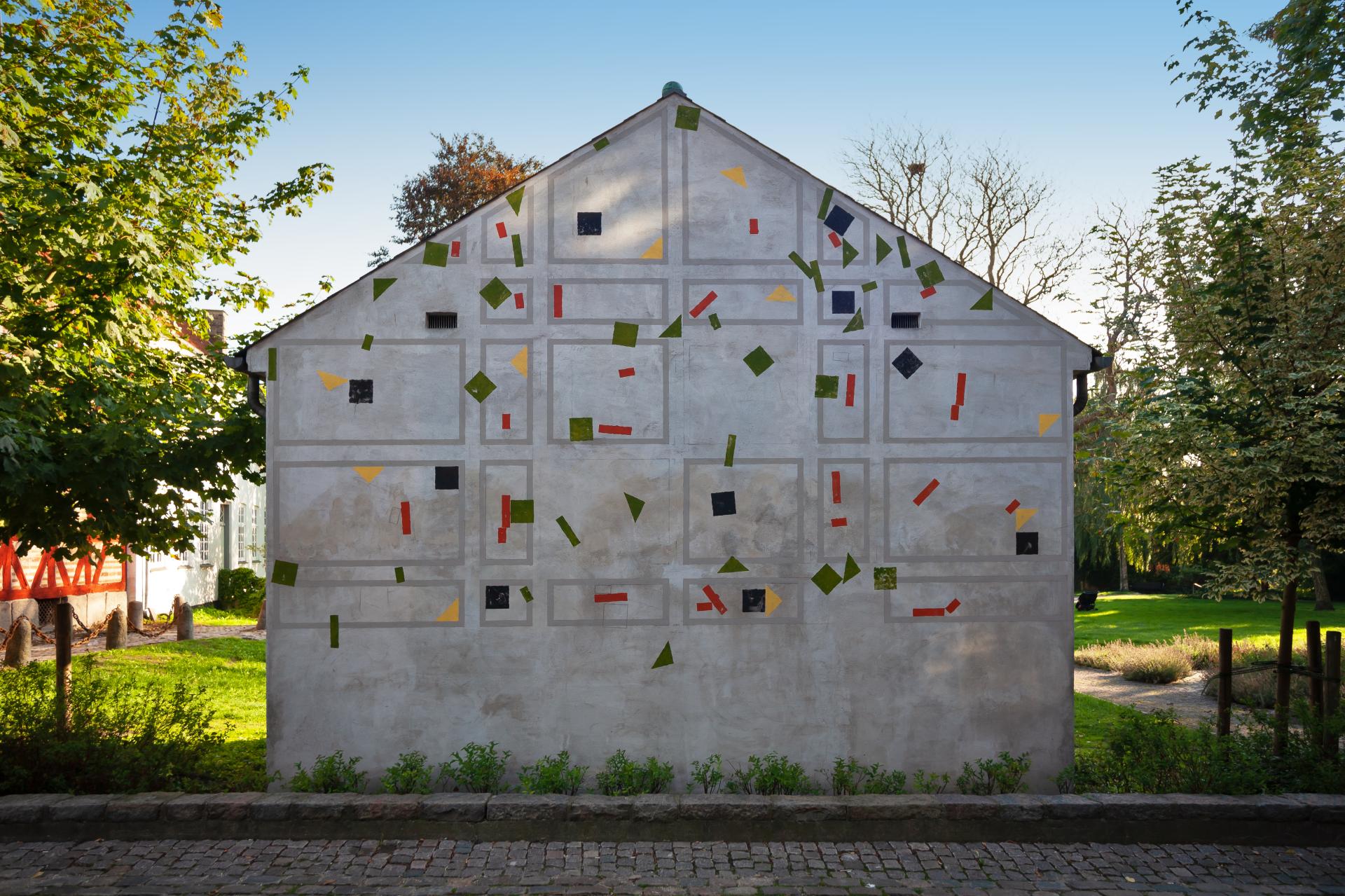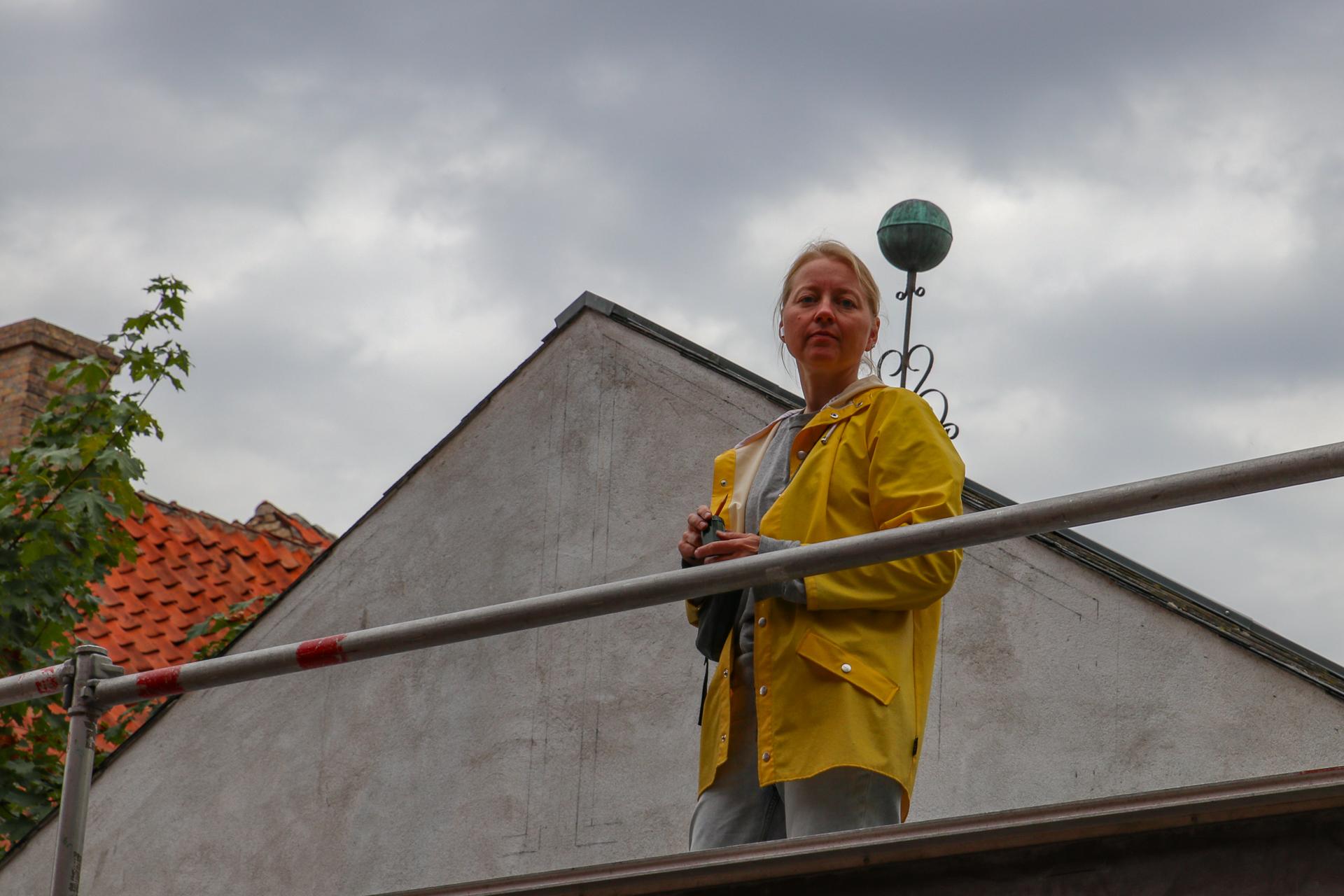In 2000 the old tea-house (from 1850) was rebuilt on its original site in Apotekerhaven (the Apothecary garden) by Holbæk Museum. On the back of the tea-house the work Free Confetti spreads out its geometric forms. Confetti as we know it today originates from the symbolic rituals of historic times, where corn and candy were thrown on special occasions. Here, the confetti refers to a freely celebratory element, seeking to break free of formal restrictions.
The forms of the work resemble oversize confetti, but actually stem from the materials that make up the interior of the tea-house. The gray frames come from the ceiling inside the house; the quadratic and triangular shapes from the tile border running along the interior floor and walls, and the oblong and quadratic shapes from the brick border on the sides and front of the exterior. The colors too have been gleaned from the house, the garden and the surrounding buildings.
The shapes have been cautiously sponged onto the surface to express the ephemeral quality of confetti: a meditation on the free, temporary aspects of Winckelmann’s work, containing the germ of the teahouse’s history, while simultaneously referring to life playing out in and around it right now.
b. 1971 in Sønderborg, lives and works in Copenhagen.




